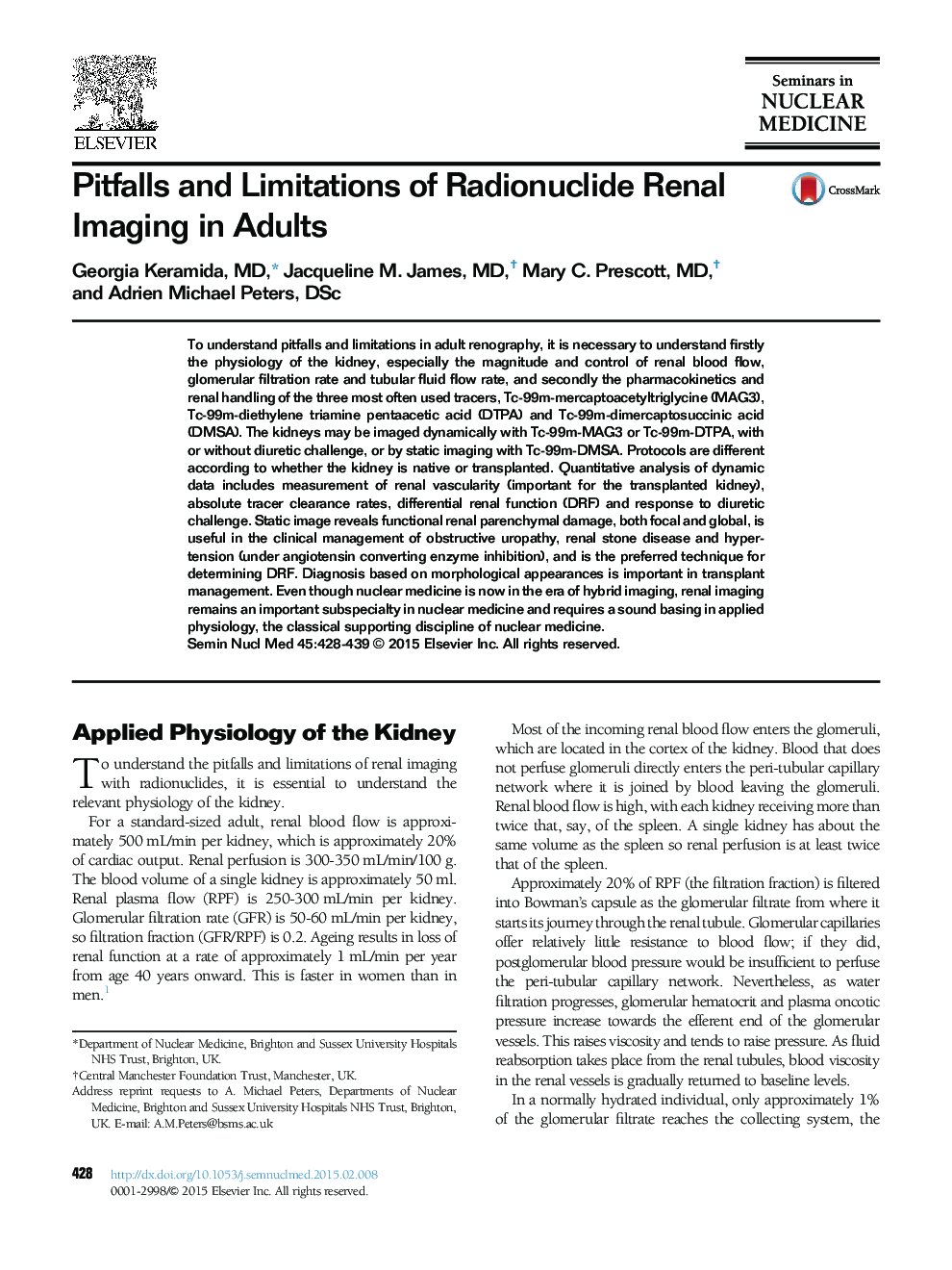| Article ID | Journal | Published Year | Pages | File Type |
|---|---|---|---|---|
| 4250854 | Seminars in Nuclear Medicine | 2015 | 12 Pages |
To understand pitfalls and limitations in adult renography, it is necessary to understand firstly the physiology of the kidney, especially the magnitude and control of renal blood flow, glomerular filtration rate and tubular fluid flow rate, and secondly the pharmacokinetics and renal handling of the three most often used tracers, Tc-99m-mercaptoacetyltriglycine (MAG3), Tc-99m-diethylene triamine pentaacetic acid (DTPA) and Tc-99m-dimercaptosuccinic acid (DMSA). The kidneys may be imaged dynamically with Tc-99m-MAG3 or Tc-99m-DTPA, with or without diuretic challenge, or by static imaging with Tc-99m-DMSA. Protocols are different according to whether the kidney is native or transplanted. Quantitative analysis of dynamic data includes measurement of renal vascularity (important for the transplanted kidney), absolute tracer clearance rates, differential renal function (DRF) and response to diuretic challenge. Static image reveals functional renal parenchymal damage, both focal and global, is useful in the clinical management of obstructive uropathy, renal stone disease and hypertension (under angiotensin converting enzyme inhibition), and is the preferred technique for determining DRF. Diagnosis based on morphological appearances is important in transplant management. Even though nuclear medicine is now in the era of hybrid imaging, renal imaging remains an important subspecialty in nuclear medicine and requires a sound basing in applied physiology, the classical supporting discipline of nuclear medicine.
